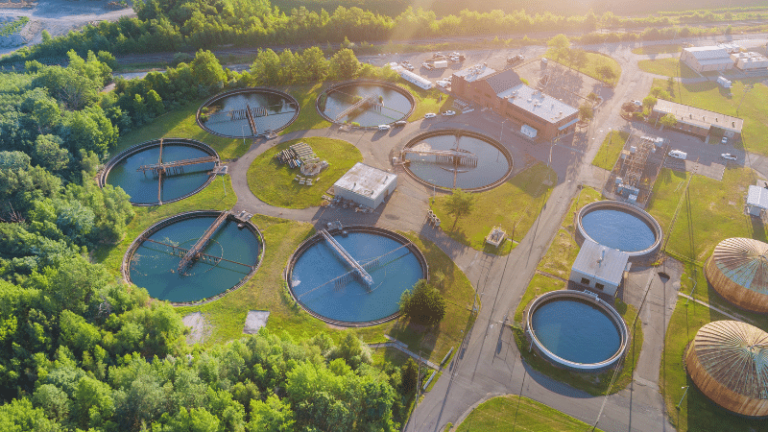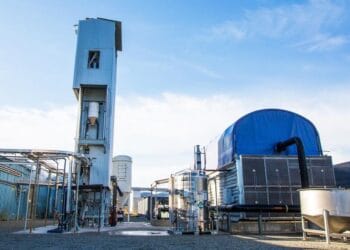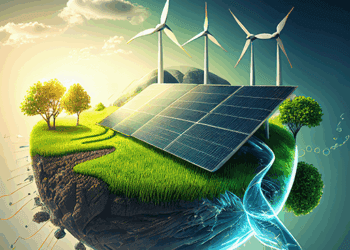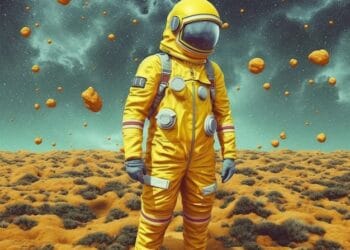Water is the silent engine of civilization. It is the lifeblood of our bodies, the foundation of our agriculture, and the coolant for our industries. On a planet blanketed in blue, it is easy to assume its abundance is limitless. Yet, this assumption is a fragile illusion. A profound and escalating global crisis of water scarcity and contamination now threatens the health, stability, and future of billions. The challenge is stark: how do we provide clean, safe water for a growing global population on a planet strained by climate change and pollution?
The answer is not just in conservation, but in innovation. Beneath the surface of this crisis, a quiet but powerful technological revolution is underway. Scientists, engineers, and entrepreneurs are rapidly advancing the science of water purification, developing groundbreaking methods that were once the realm of science fiction. This is not about marginal improvements; it is a fundamental reimagining of how we source, treat, and reuse our most precious resource. From atomic-scale filters to AI-driven smart grids, this progress offers tangible hope, charting a new course towards a future of water security for all.
The Twin-Headed Crisis: Scarcity and Contamination
To understand the importance of this technological revolution, we must first grasp the scale of the problem. The global water crisis is a hydra with two venomous heads: absolute scarcity and pervasive contamination.
First, scarcity is a geographic and logistical paradox. While 70% of the Earth is covered in water, 97.5% of it is saltwater, and much of the remaining freshwater is locked away in glaciers and ice caps. This leaves a tiny fraction available for human use, and it is distributed unevenly. Population growth, intensive agriculture (which accounts for ~70% of freshwater use), and the demands of industry are placing unprecedented strain on rivers, lakes, and aquifers. Climate change exacerbates this, altering rainfall patterns, intensifying droughts, and shrinking vital water sources. The result is that billions of people live in water-stressed regions, a number projected to grow dramatically.
Second, the water that is available is increasingly contaminated. The threats are diverse and insidious:
- Microbial Pathogens: In many developing regions, water sources are contaminated with bacteria (like E. coli), viruses (Hepatitis A), and protozoa (Giardia, Cryptosporidium). These pathogens are responsible for devastating waterborne diseases that claim millions of lives annually, primarily among children.
- Chemical Pollutants: Industrial effluent and agricultural runoff leach a toxic cocktail of heavy metals (lead, arsenic, mercury), pesticides, and nitrates into groundwater and surface water. These contaminants can cause cancer, neurological damage, and severe developmental issues.
- Emerging Contaminants: A new generation of pollutants now plagues our water systems. Microplastics, tiny fragments of plastic debris, are now found in water sources globally. Pharmaceuticals, hormones, and personal care products pass through our bodies and wastewater systems, posing unknown long-term risks to ecosystems and human health.
Traditional purification methods—such as boiling or basic sand and charcoal filtration—are often inadequate against this complex onslaught of modern contaminants. A more sophisticated and powerful arsenal of technologies is required.
The Technological Vanguard: Innovations Forging Our Water Future
The heart of the new water revolution lies in a suite of advanced technologies that can target contaminants with unprecedented precision and efficiency. These methods are transforming our ability to turn unusable water into a pure, life-sustaining resource.
A. Advanced Membrane Filtration: The Precision Barrier Membrane technology has become the workhorse of modern water purification, acting as a highly selective physical barrier. The innovation lies in creating membranes with ever-finer pores and more robust materials.
- Reverse Osmosis (RO): This is the gold standard for desalination and high-purity water production. In RO, immense pressure is used to force water molecules through a semi-permeable membrane, leaving behind salts, minerals, and other larger contaminants. Think of it as a molecular sieve so fine that only water can pass. While incredibly effective, traditional RO has been dogged by high energy consumption and the problem of what to do with the highly concentrated salt brine left behind. Recent innovations, such as advanced energy-recovery devices that recapture pressure from the waste stream, and new graphene-oxide coatings that prevent membrane fouling (clogging), are dramatically improving its efficiency and lowering operational costs.
- Nanofiltration (NF), Ultrafiltration (UF), and Microfiltration (MF): These membrane processes have larger pore sizes than RO and are used for different purposes. Microfiltration can remove sediment and bacteria, while Ultrafiltration can also remove viruses. Nanofiltration sits between RO and UF, capable of removing larger dissolved solids and softening water by targeting specific divalent ions like calcium and magnesium, all while operating at lower pressures than RO.
B. The Nanotechnology Frontier: Engineering at the Atomic Scale Nanotechnology is unlocking a new dimension in water purification, offering solutions that are more efficient, selective, and intelligent.
- Graphene Filters: Hailed as a “wonder material,” graphene is a single layer of carbon atoms arranged in a honeycomb lattice. It is incredibly strong, and when perforated with nano-sized pores, it creates the perfect filter. Water molecules can pass through these pores with very little resistance, while contaminants are blocked. The potential is immense: graphene-based membranes could make desalination significantly more energy-efficient and could be tailored to selectively remove specific pollutants like lead or arsenic.
- Nanocatalysts and Nanosensors: Scientists are developing reactive nanoparticles that can act as powerful catalysts, breaking down persistent organic pollutants into harmless compounds like water and CO2. Furthermore, nanosensors can be integrated into water systems to provide real-time, ultra-sensitive detection of specific contaminants, allowing for immediate response to a contamination event.
C. Harnessing Light: The Power of Ultraviolet (UV) Disinfection Chemical disinfection using chlorine has been a public health triumph, but it has downsides, including the formation of harmful disinfection byproducts and its ineffectiveness against certain hardy pathogens. Ultraviolet light offers a powerful, chemical-free alternative.
- The UV Mechanism: High-intensity UV-C light is directed through the water, where it penetrates the cells of microorganisms. The light energy is absorbed by their DNA and RNA, scrambling their genetic code and rendering them unable to reproduce. They are effectively neutralized without adding any chemicals to the water.
- The LED Revolution: Traditionally, UV systems have relied on mercury vapor lamps, which are fragile, require warm-up time, and contain toxic material. The game-changer has been the development of UV-C LEDs. These solid-state devices are robust, energy-efficient, have a long lifespan, and provide instant on/off power. Their small size is enabling a new generation of point-of-use purifiers for homes, water bottles, and off-grid applications, bringing reliable disinfection to the masses.
D. Nature-Inspired Processes: The Gentle Approach Some of the most promising new technologies are those that mimic natural processes, often operating with far less energy than high-pressure systems.
- Forward Osmosis (FO): Unlike RO which uses hydraulic pressure, FO uses the natural power of osmosis. A highly concentrated “draw solution” on one side of a membrane pulls fresh water through from a contaminated source. The challenge then becomes separating the pure water from the draw solution, but for certain applications, like treating highly challenging industrial wastewater, FO’s low-fouling nature and low energy profile make it ideal.
- Membrane Distillation (MD): This thermal process mimics the natural rain cycle. A slight temperature difference is applied across a hydrophobic membrane. Water evaporates from the warm, contaminated side, passes through the membrane’s pores as vapor, and then condenses as pure liquid on the cool side, leaving all salts and non-volatile contaminants behind. A key advantage is its ability to run on low-grade waste heat from power plants or solar energy, making it a potentially very sustainable option.
E. The Digital Brain: AI and Smart Water Management Artificial Intelligence and the Internet of Things (IoT) are adding a layer of intelligence over our water infrastructure, optimizing it for efficiency and resilience.
- AI-Optimized Treatment: Machine learning algorithms can analyze real-time data from sensors throughout a treatment plant. They can predict when a membrane needs to be cleaned, precisely adjust chemical dosing to match incoming water quality, and optimize pump pressures to minimize energy use, saving significant operational costs.
- Smart Water Grids: By deploying networks of IoT sensors across a city’s pipe network, utilities can create a “smart grid” for water. These sensors can detect leaks in real-time, monitor water quality block by block, and predict shifts in demand. This allows for proactive maintenance, rapid response to contamination, and a massive reduction in water lost through aging infrastructure.
From the Lab to the Landscape: Real-World Impact

These technologies are no longer confined to the laboratory. They are being deployed globally, with transformative results.
- Securing Arid Nations: Countries like Israel, Singapore, and the UAE have become world leaders in water technology out of necessity. Israel generates a majority of its drinking water through massive reverse osmosis desalination plants, effectively drought-proofing the nation.
- The Rise of Water Reuse: The concept of “toilet-to-tap,” or potable water reuse, is gaining ground. In places like Orange County, California, and Singapore (with its renowned NEWater), advanced purification trains—often involving microfiltration, reverse osmosis, and UV disinfection—treat municipal wastewater to a standard purer than most bottled waters. This creates a closed-loop, drought-resilient water supply.
- Empowering Remote Communities: The new wave of decentralized, off-grid technologies is a lifeline for remote communities. Solar-powered UV-LED systems can provide safe drinking water to a village without electricity. Atmospheric Water Generators (AWGs), which pull humidity from the air and condense it into pure water, are being deployed in disaster relief and arid areas. These solutions provide water security at the local level, fostering community resilience.
The Road Ahead: Challenges on the Path to Water Security
Despite the breathtaking pace of innovation, significant hurdles remain on the path to achieving global water security.
- The Cost Barrier: Advanced technologies, while becoming cheaper, are still expensive to build and operate. The primary challenge is creating financing models and scalable solutions that are affordable for the developing nations that need them most.
- The Water-Energy Nexus: Many purification methods, especially desalination, are energy-intensive. As we produce more clean water, we must not exacerbate the climate crisis by burning more fossil fuels. The future depends on powering water purification with renewable energy.
- The Brine Problem: Desalination produces vast quantities of highly concentrated brine, which, if dumped back into the ocean indiscriminately, can harm marine ecosystems. Innovative solutions are needed, including better diffuser systems and emerging “brine mining” technologies that extract valuable minerals like magnesium, lithium, and uranium from the waste stream.
- Policy and Public Perception: Technology alone is not a silver bullet. Strong government policies, investment in infrastructure, and public education campaigns are essential. Overcoming the “yuck factor” associated with water reuse is a critical communication challenge.
A Future Written in Water

The global water crisis is one of the defining challenges of the 21st century, a silent threat that underpins food security, public health, and political stability. Yet, for every daunting statistic, there is a story of human ingenuity fighting back. The quiet revolution in water purification technology is a powerful testament to our capacity to innovate our way out of crisis. By harnessing the power of advanced membranes, nanotechnology, light, and artificial intelligence, we are developing the tools to create, recycle, and manage water with an efficiency previously thought impossible. The journey is long, but for the first time, a future where every person on Earth has access to clean, safe, and sustainable water is not just a dream, but an achievable reality.













